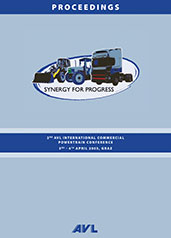Technical Paper
1-D MODEL DEVELOPMENT TO STUDY THE DYNAMIC BEHAVIOR OF THE MECHANICAL DIODE CONFIGURATION APPLIED TO ONE-WAY CLUTCH (OWC)
2009-10-06
2009-36-0230
Two types of One-Way Clutch (OWC) are commonly used in automotive applications – the roller and the sprag types. Some manufacturers claim the advantages of a different type of OWC having a mechanical diode OWC. The aim of this research is to study the mechanical diode system in order to point out reasons that explain why this configuration is not a spread out system in automotive applications that require lockup functionality. To achieve this objective the research work focuses on the development of 1-D models to simulate system behavior and evaluate product performance against design variables. Improvements to the system are suggested based on the simulation results.




